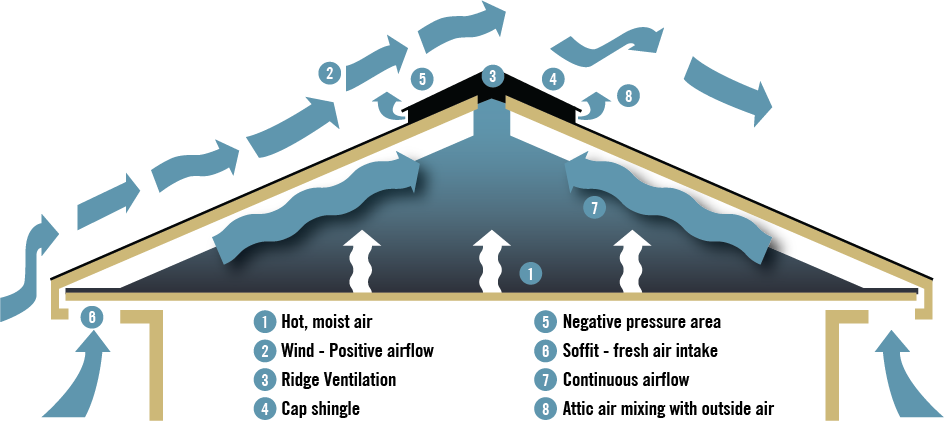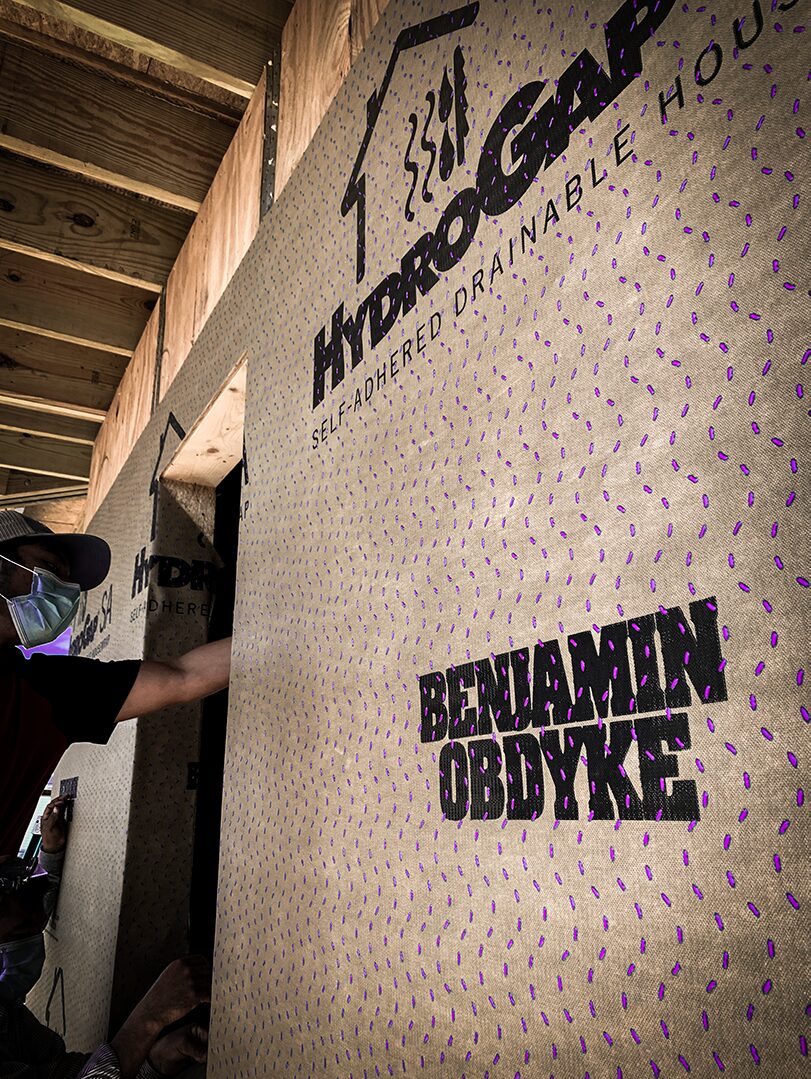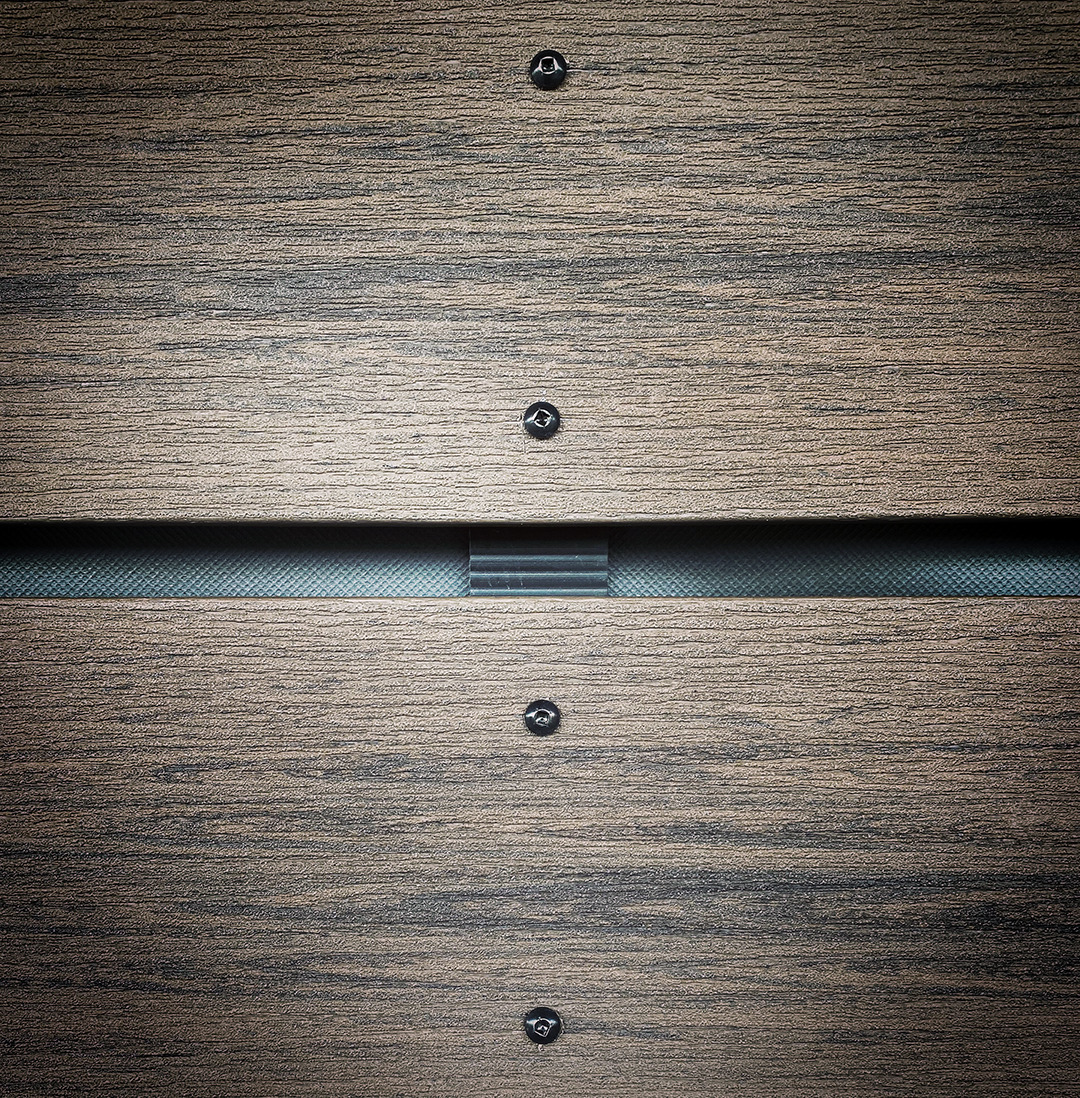Attic ventilation has become a hot topic of discussion among the building science community in recent years. While there are many ways to include attic ventilation in your builds, using ridge vents is an efficient and cost-effective solution.
The Purpose of Ridge Vents
Ridge vents help remove excess heat and moisture from the attic space. They create an opening at the bottom and top of the roof, creating a convective airflow helping hot air, which naturally rises in the building system, to escape. By utilizing ridge vents and eliminating excess hot, moist air, you can reduce the potential of roofing failure.
To further enhance the success of your roofing system, ensure you have proper soffit venting. Essentially, you should have an equal amount of airflow moving through the ridge of the roof as you do at the soffit.
If you don’t incorporate ventilation into your roof design, moist air can remain in the attic space, degrading the roof structure over time and contributing to long-term moisture issues and potential structural failures.
If you’re unsure how much ridge vent you need for a project, try our ridge vent tool calculator.
Combatting Ice Damming with Ridge Vents
Another benefit to using ridge vents is that they decrease the possibility of ice damming. Ice dams form when snow melts and freezes on the lower part of the roof. The heaviness of the ice then weighs down the roofing system, putting walls, ceilings, siding, gutters, and downspouts at risk for costly structural damage. Because ridge vent systems deliver a constant flow of circulating air, the possibility of ice damming is greatly reduced.
Ridge Vent Solutions Offered by Benjamin Obdyke
Choosing the best type of ridge vent for your project comes down to preference and geography.
Entangled matrix rolled products are typically compression-resistant and feature a wingtip design that prevents the shingle from reducing ventilation. Our Rapid Ridge and Roll Vent products are best under conventional asphalt-based shingles, while Rapid Ridge 7 was designed for cedar shingles.
Sectional rigid ridge vents, such as the Xtractor line, are a solid plastic product. These products feature external vents that have a lip to the design, allowing them to perform well in high-wind and coastal areas.
The products in the rolled and sectional product lines both have gun-nailable and hand-nailable options, depending on preference. Hand-nailed products typically use longer nails, which allows for more airflow; however, if you’re in a time crunch, gun-nailable products can be installed much quicker.
Ridge ventilation products are designed to be functional and enhance the lifespan of your roofing system.




